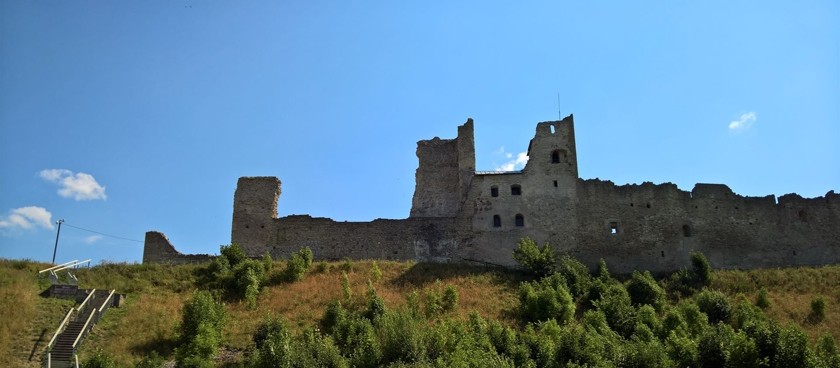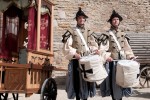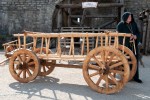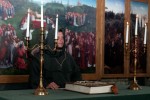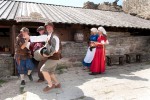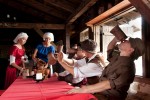- #EE31
- Vallimägi, Rakvere, 44307 Lääne-Viru maakond, Estonia
- +3723225502
- http://www.rakverelinnus.ee/
- Working hours*:
March, April, September, October:
10:00 - 16:00
May - June
10:00 -18:00
January, February, November, December:
Groups by reservation at any time
- Prices*:
Adult 11.00€
Student 9.00€
Family ticket 22.00€
Preschoolers free of charge
The price includes an opportunity to visit the torture chamber, „death room” and „hell”.
Guided tour 30€/h - * - opening and closing times as well as entrance prices, are subject to alterations without notice. Visitors are advised to check before visiting.
- 59.3478560, 26.3518530 Copy to clipboard Copy
-
#Castles , #Museums
RAKVERE CASTLE’S HISTORY
Throughout the ages, Rakvere Castle has belonged to Danish kings, knight-monks of the Livonian Order and the Swedish and Polish states.
The longest period was the age of the Order, when Rakvere Castle was an important link in the defence system of the eastern border of the Teutonic Order. The bailiffs of Rakvere Castle were usually smart and capable young knights for whom the castle was a good springboard to gaining leading positions in the Order. At the end of the prehistoric times, there was an Estonian stronghold called Tarvanpää at the present location of Rakvere Castle.
In 1226, during his journey to Virumaa the papal legate Wilhelm of Modena stayed in Rakvere Castle as well. Under his supervision, peace was made between the Danes and Germans, and land conquered from the Estonians was distributed.
Rakvere Castle under Danish rule
In the years 1238-1346, Rakvere, which was now called Wesenberg in German (literal translation from Estonian Tarvanpää), was a part of the Duchy of Estonia. The Duke of Estonia was the King of Denmark on whose behalf the country was ruled by the regent residing in Tallinn. Rakvere Castle belonged to the King on whose name the local ruler was the commander-in-chief subordinate to the regent. In the middle of the 13th century, the Danes built the first stone fortifications in the place of the ancient Estonian stronghold, and by the mid-14th, century there was a Danish-built curtain wall castle on Vallimägi Hill.
Livonian Order at Rakvere Castle
After the beginning of the St. George’s Night Uprising, the vassals of Harju and Viru placed themselves under the protection of the Livonian Order, and from 16 May 1343, Rakvere Castle belonged to the Livonian Order. The transition was formalised in 1346 and 1347 when the King of Denmark sold his duchy to the Teutonic Order and the latter, in its turn, sold it to the Livonian Order. The age of the Order in the castle lasted until July 1558 when the Russians took over the castle from Gert Huyn von Ansteraidt, the then bailiff of the Livonian Order, without meeting any resistance. In the age of the Order, Rakvere was ruled by a bailiff who governed the bailiwick that had been formed from the surroundings of the castle. The bailiffs of Rakvere were not among the highest commanders of the Order; however, attention has been drawn to the fact that several bailiffs of Rakvere climbed up the career ladder later on and gained important positions in the Order. For example, in 1410, one of them, Hermann Vinken, became the land marshal, i.e. the second most important man in the Livonian Order. In the age of the Order, Rakvere Castle was extensively rebuilt.
During a building period of three hundred years the simple curtain wall castle was turned into a convent building that served better the needs of the Livonian Order as a religious order of knighthood. The convent building was located in the northern part of the castle. In the middle of it, there was a rectangular inner courtyard surrounded by wings that, all of which specific purposes, and various halls necessary for community life: a chapel, a chapter house or a meeting hall, a refectory or a dining hall, and a dormitory or a sleeping hall. To the south of the convent building, there was a forecourt, its walls lined by various workshops, sheds, stables, and other household buildings needed for the operation of the Order’s castle as a military unit. In the first half of the 16th century, a semi-circular cannon tower (rondel) was built near the main gate in the north-east corner of the forecourt.
Livonian War (1558-1583)
In the years of the Livonian War the castle was in the possession of the Russians who built a new line of fortifications around the castle, using stones broken from the citizens’ houses and the Franciscan monastery. In the winter of 1574, the Swedes attempted to conquer the castle without much success.
The Swedish army was torn by great tension between mercenaries of different nationalities which reached its climax on the 17th of March with an armed conflict between German and Scottish mercenaries –almost 1500 Scotsmen were slain. In 1577, the “Livonian Hannibal” Ivo Schenkenberg was taken prisoner by the Russians at Rakvere Castle. He was taken to Pskov and brutally executed by personal orders of Tsar Ivan IV. On 4 March 1581, the Swedish army, led by Pontus de la Gardie, took the castle back from the Russians.
The Destruction of Rakvere Castle
During the Polish-Swedish War of 1600-1629, the castle was partly blown up by the Polish in 1605, and later by the Swedes. The castle has lain in ruins ever since. In 1635, the Swedes deleted Rakvere Castle from the list of fortresses.
Nowadays there are a lot of education programs:
A TRIP THROUGH A FAIRY TALE
MEDIEVAL ADVENTURE
FUN BATTLE IN A LIVONIAN CASTLE
MEDIEVAL PLEASURES
